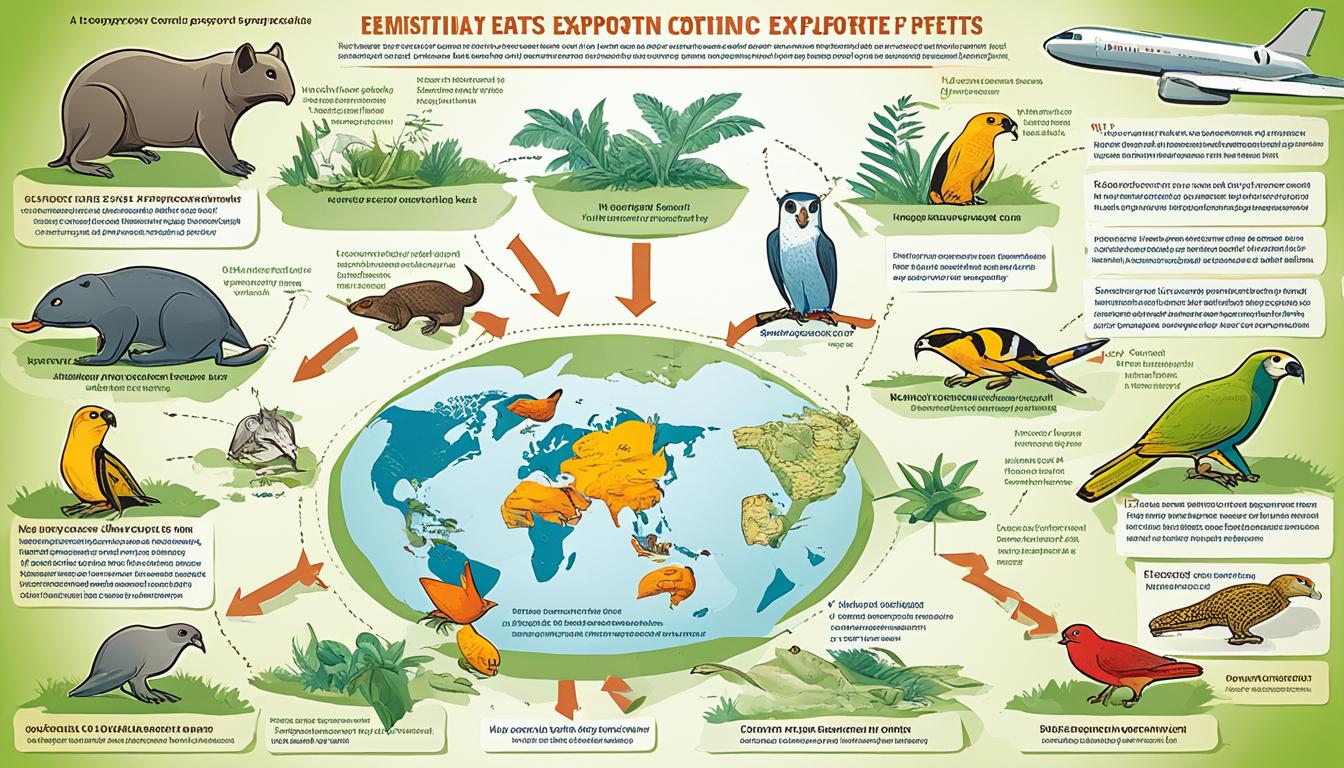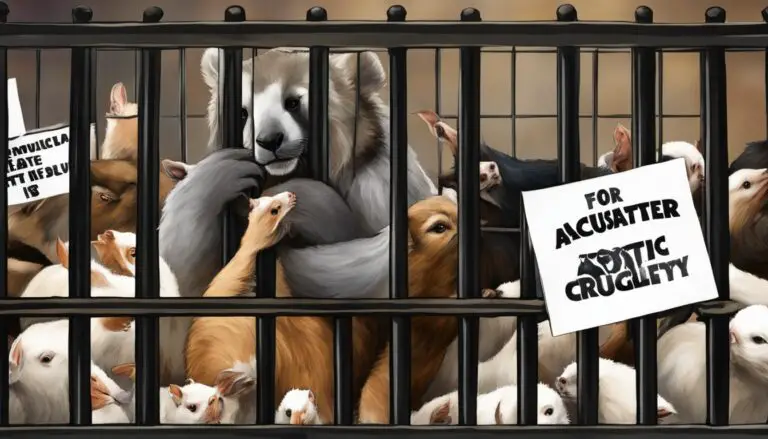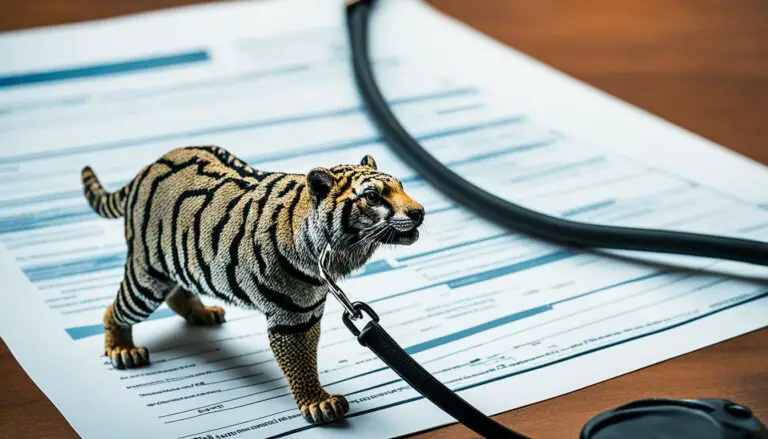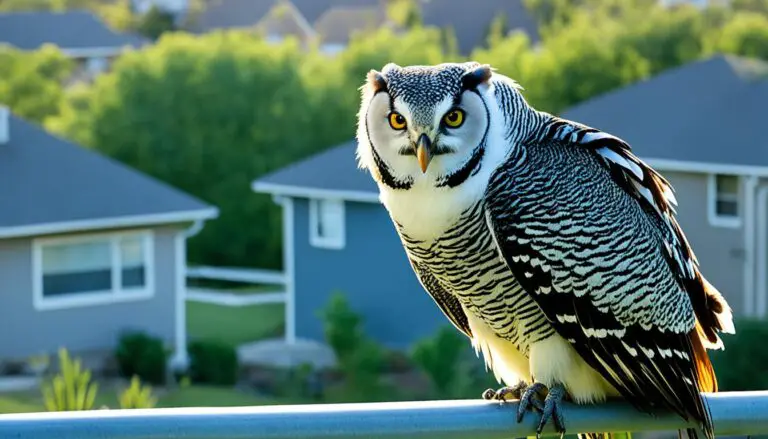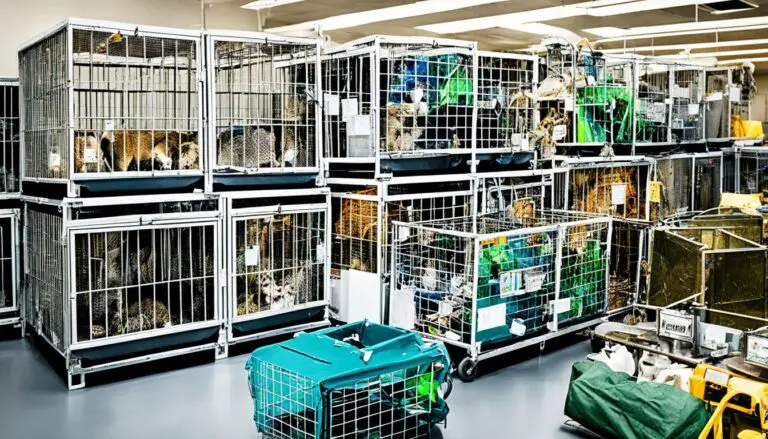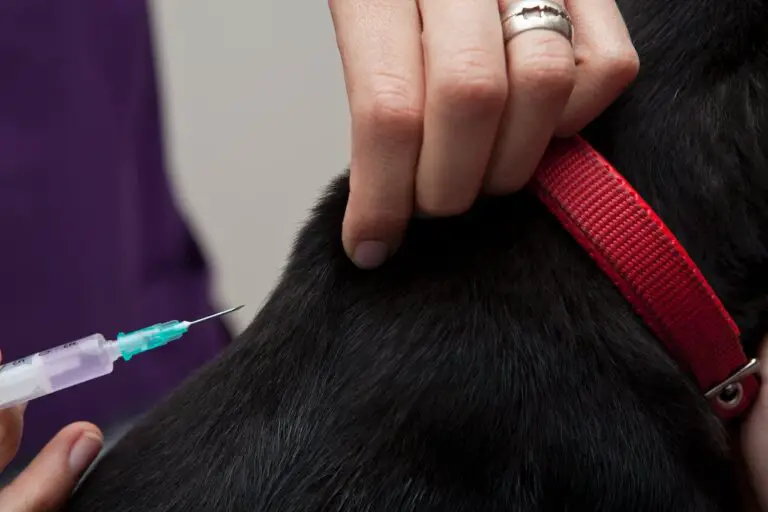Understanding Exotic Pet Export Laws in the US
Exotic pets, with their unique and fascinating characteristics, have captivated people’s interest for centuries. However, the trade and transportation of these extraordinary animals require adherence to specific regulations and legal requirements. In this article, we will delve into the intricate world of exotic pet export laws in the United States and explore the international pet transportation regulations that govern this industry.
Exporting exotic pets involves a complex process that ensures the safety, welfare, and conservation of these extraordinary creatures. International pet transportation regulations play a vital role in safeguarding animal welfare and preventing illegal trade. Understanding the legal requirements for exporting exotic pets is crucial for both individuals and businesses involved in this industry.
Key Takeaways:
- Exotic pet export laws in the US are designed to safeguard animal welfare and prevent illegal trade.
- International pet transportation regulations play a vital role in governing the export of exotic pets.
- Complying with legal requirements is crucial for individuals and businesses involved in the exotic pet export industry.
- Exporting exotic pets involves a complex process that ensures the safety and welfare of the animals.
- The trade and transportation of exotic pets require adherence to specific regulations to protect both animals and ecosystems.
Sources of Exotic Pets
Exotic pets can come from two main sources: captive breeding programs and the wild.
Some argue that captive breeding can be an ethical method to meet the demand for exotic pets while reducing pressure on wild populations. Captive breeding programs aim to produce offspring of exotic species in controlled environments, ensuring genetic diversity and proper care.
However, distinguishing between captive-bred and wild-caught animals can be challenging. This presents a problem in the exotic pet trade, as some sellers may falsely label wild-caught animals as captive-bred to bypass regulations.
Social media has also played a significant role in fueling the demand for exotic pets. Influencers on platforms like Instagram and YouTube showcase their exotic pets, creating an idealized image of wildlife in domestic settings. This exposure has normalized the concept of owning exotic pets and further increased the demand for specific species among enthusiasts.
Comparison of Exotic Pet Sources
| Source | Advantages | Disadvantages |
|---|---|---|
| Captive Breeding | Preserves genetic diversity, reduces pressure on wild populations, potential for better animal welfare | Challenges in verifying captive-bred status, potential for mislabeling, high costs of breeding programs |
| Wild Capture | Availability of rare species, potential income for local communities | Destruction of natural habitats, threat to wildlife populations, stress and mortality during capture and transport |
Captive Breeding and its complexities
When it comes to obtaining exotic pets, captive breeding is often seen as a more ethical alternative to capturing animals from the wild. However, the trade of protected species and the difficulty in determining whether an animal is truly captive-bred or not present challenges in regulating this practice.
Captive breeding can take various forms, including controversial activities like tiger farming for the trade of pelts and body parts. While some argue that captive-bred animals are more docile and better suited for domestic settings, there are still inherent risks involved.
One major issue is the labeling of shipments. Unscrupulous traders may falsely claim that wild-caught animals are captive-bred to bypass regulations. This further complicates efforts to protect endangered species and regulate the exotic pet trade. Distinguishing between captive-bred and wild-caught animals can be a daunting task, often requiring advanced methods such as DNA genotyping.
Additionally, captive breeding can be economically challenging. The cost of maintaining proper facilities, providing suitable habitats, and ensuring appropriate care for the animals can be substantial. To sustain their operations, breeders may need to find ways to make captive breeding more cost-effective, even resorting to taking animals from the wild, which undermines the intended purpose of captive breeding programs.
Ensuring the welfare and conservation of exotic species in captivity requires addressing the trade of protected species, finding effective methods to determine the origin of animals, and accounting for economic considerations in sustainable captive breeding efforts. Only by addressing these complexities can we work towards a responsible and regulated exotic pet industry.
| Challenges in Captive Breeding | Implications |
|---|---|
| Trade of protected species | Puts endangered species at risk and undermines conservation efforts |
| Difficulty in determining captive-bred animals | Allows illegal trade to masquerade as legal trade, hindering regulation |
| Economic considerations | Captive breeding can be expensive, potentially leading to unsustainable practices |

The Capture of Exotic Pets
Many exotic pets are sourced through capturing animals from the wild. This practice has a significant impact on animal populations, leading to declines in certain species. The capture and transport process itself is also highly stressful for the animals and can result in mortality.
When wild animals are captured, their natural habitats are disrupted, and ecosystems can be thrown off balance. This disruption can lead to a decrease in biodiversity and may have long-term consequences for the environment. Additionally, the removal of animals from their natural habitats can disrupt social structures and impact breeding patterns, further contributing to population decline.
“The capture of exotic pets not only threatens the survival of many species, but it also disrupts ecosystems and diminishes biodiversity.”
During capture and transport, exotic animals often suffer from high stress levels, which can have physical and psychological impacts. The process of capturing animals can be traumatic, involving techniques such as trapping, netting, or even tranquilizing. These methods can lead to injuries and even death.
Once captured, the animals are typically transported in confined spaces, enduring long journeys that are often characterized by poor conditions and inadequate care. These stressful and cramped environments can result in health issues and increased mortality rates.
Research has shown that only a fraction of captured animals survive the capture and transportation process. Those that do make it to their final destination alive often face challenges in adapting to their new environments. The stress of captivity and the unnatural conditions can lead to behavioral problems, physiological imbalances, and reduced lifespans.
The Devastating Impact on Animal Populations
The impact of capturing exotic pets extends beyond the individual animals. It directly contributes to the decline of various species, many of which are already threatened or endangered. The loss of these animals can disrupt fragile ecosystems and have cascading effects on other species.
For example, the illegal capture of certain bird species for the pet trade has resulted in population declines and even local extinctions. This loss can have profound implications for pollination, seed dispersal, and other vital ecological processes.
Addressing the Issue
Efforts must be made to address the capture of exotic pets to protect animal populations and promote their conservation. This includes:
- Strengthening regulations and enforcement on the capture and trade of exotic animals.
- Supporting conservation initiatives that focus on protecting habitats and ecosystems.
- Promoting education and awareness about the negative impacts of the exotic pet trade.
- Encouraging responsible pet ownership and promoting alternative ways to appreciate and support wildlife, such as ecotourism.
By taking these measures, we can work towards ensuring the welfare of exotic animals and preserving the delicate balance of our ecosystems.
Social Media and the Demand for Exotic Pets
Social media platforms have revolutionized the way we connect and share content. In recent years, they have also played a significant role in shaping the demand for exotic pets. Accounts showcasing exotic pets have gained immense popularity, creating a new wave of fascination for these unique creatures. As a result, the presence of wildlife in domestic settings has become increasingly normalized.
This idealized depiction of exotic pets on social media platforms is not without its risks. While it may seem harmless and even glamorous, it can lead to an increased demand for these animals. The allure of owning an exotic pet, fueled by the carefully curated images and videos, can prompt impulsive purchases without proper consideration for the implications.
“Social media has transformed the way we perceive and desire exotic pets. The constant exposure to carefully crafted images and stories creates an idealized narrative that can skew perceptions of the challenges and responsibilities that come with owning these animals.”
Wildlife in domestic settings poses potential risks, not only for the animals themselves but also for humans and other pets. Exotic pets are often taken out of their natural habitats, causing stress and potential health issues. They may also exhibit unpredictable behaviors, posing a danger to their owners and those around them. Additionally, the introduction of non-native species into new environments can have detrimental effects on ecosystems, disrupting the natural balance and potentially leading to the extinction of native species.
Image: 
It is crucial to recognize the risks associated with owning exotic pets and to promote responsible pet ownership. Education and awareness campaigns, both on social media platforms and through other channels, play a vital role in curbing the demand for these animals. By highlighting the challenges and potential consequences, we can encourage thoughtful consideration and discourage impulsive purchases.
The Role of Influencers
Influencers on social media have a significant impact on shaping trends and consumer behavior. When it comes to exotic pets, they have the power to set new standards and influence the masses. As influencers, it is essential that they promote responsible ownership and provide accurate information about the challenges and risks involved. Responsible influencers can use their platforms to educate their followers and foster a more sustainable and ethical approach towards exotic pets.
Addressing the Demand-Supply Imbalance
In addition to increasing awareness and education, efforts should be directed towards addressing the demand-supply imbalance. Stricter regulations and enforcement are necessary to ensure that only legal and ethically sourced exotic pets are available for ownership. This requires collaboration between governments, international organizations, and relevant stakeholders to establish and enforce guidelines that prioritize animal welfare and conservation.
| Benefits of Addressing Demand-Supply Imbalance | Risks of Unregulated Exotic Pet Trade |
|---|---|
|
|
By addressing the demand for exotic pets and ensuring that legal and responsible practices are in place, we can protect both animals and humans from the risks associated with wildlife in domestic settings. Let us strive for a world where the fascination for exotic pets is paired with a deep sense of responsibility and respect for wildlife.
The Effects of the Exotic Pet Trade
The exotic pet trade has had a significant impact on animal populations worldwide, leading to the decline and endangerment of many species. The demand for exotic pets has resulted in the capture and removal of animals from their natural habitats, disrupting ecosystems and contributing to the loss of biodiversity. This trade poses risks not only to animals but also to humans and the environment.
One of the major risks associated with the exotic pet trade is the potential for disease transmission. Many exotic animals can carry zoonotic diseases that can be transferred to humans, posing a public health risk. Additionally, the trade contributes to the spread of invasive species, which can have detrimental effects on native ecosystems.
In efforts to combat the trade, international agreements like the Convention on International Trade in Endangered Species of Wild Fauna and Flora (CITES) have been established. CITES regulates the international trade of endangered species and aims to protect them from exploitation. Various countries have also implemented their own national and state laws to regulate the exotic pet trade, including licensing requirements and bans on certain species.
Nonprofit organizations play a crucial role in educating the public about the negative impacts of owning exotic pets. They raise awareness about animal welfare issues, the risks of purchasing exotic animals, and the importance of conservation. These organizations work towards reducing the demand for exotic pets and promoting responsible pet ownership.
“The exotic pet trade not only threatens animal populations but also poses risks to human health and natural ecosystems. It requires a collective effort from governments, organizations, and individuals to combat the trade and protect the welfare of all involved.”
The image below illustrates the impact of the exotic pet trade on animal populations:
By understanding the effects of the exotic pet trade and taking action to combat it, we can work towards safeguarding animal populations, preserving ecosystems, and promoting a responsible approach to pet ownership.
Conclusion
Exporting exotic pets legally involves navigating a complex web of international and national regulations. Pet owners must be well-informed about the legalities and guidelines associated with transporting these unique animals. By adhering to these laws, we can ensure the safety and well-being of exotic pets throughout the export process.
However, merely focusing on the legalities is not enough. It is equally important to address the root cause of the issue – the demand for exotic pets. Education and awareness campaigns that highlight the negative impacts of the exotic pet trade can help curb this demand. By informing the public about the ecological and ethical implications of owning exotic pets, we can encourage responsible pet ownership and discourage the purchase of these animals.
To protect exotic animals in the long term, we must adopt a holistic approach. This includes a combination of strong legal measures, guidelines for pet owners, and concerted efforts to reduce the demand for exotic pets. Only through the collective action of governments, organizations, and individuals can we effectively combat the illegal wildlife trade and ensure a sustainable future for these magnificent creatures.
FAQ
What are the legal requirements for exporting exotic pets?
Exporting exotic pets legally requires compliance with international and national regulations. These regulations may include obtaining permits, meeting health and quarantine requirements, and following specific guidelines for transportation.
What are the international pet transportation regulations?
International pet transportation regulations vary depending on the destination country. They typically involve obtaining health certificates, microchipping the animal, completing necessary vaccinations, and adhering to specific travel requirements set by the country of import.
How can I ensure I am exporting exotic pets legally?
To ensure you are exporting exotic pets legally, it is crucial to research and understand the specific regulations and requirements of both your country of export and the destination country. This may involve consulting with a professional pet relocation service or contacting the appropriate government agencies for guidance.
Are there guidelines for transporting exotic pets?
Yes, there are guidelines for transporting exotic pets to ensure their well-being and safety. These guidelines may include providing appropriate containers or crates, ensuring proper ventilation and temperature control during transportation, and minimizing stress during the journey.
What permits do I need for exporting exotic pets?
The permits required for exporting exotic pets will depend on the species and the countries involved. It is essential to research and comply with the specific permit requirements set by the government agencies responsible for wildlife trade and animal export in your country.
Are there legal restrictions on exporting exotic animals?
Yes, there are legal restrictions on exporting exotic animals to prevent the trade of endangered species and protect the well-being of animals. These restrictions may include bans or regulations on specific species, strict permit requirements, and adherence to international agreements such as CITES (Convention on International Trade in Endangered Species of Wild Fauna and Flora).
How can I obtain permits for transporting exotic pets?
To obtain permits for transporting exotic pets, you will typically need to contact the appropriate government agency responsible for wildlife trade and animal export in your country. They will provide you with information on the required permits, documentation, and fees, as well as any additional regulations you need to follow.
What are the guidelines for shipping exotic pets internationally?
Guidelines for shipping exotic pets internationally will vary depending on the specific species, destination country, and the mode of transport. It is important to work with a reputable pet shipping company or consult with experts in the field to ensure you meet all the necessary guidelines for a safe and legal transport.
Source Links
- https://www.nationalgeographic.com/animals/article/exotic-pet-trade
- https://www.animallaw.info/article/detailed-discussion-exotic-pet-trade
- https://www.bornfreeusa.org/campaigns/animals-in-captivity/summary-state-laws-exotic-animals/
Peter Stones is the founder of Exotic Pets Place, the leading online resource for exotic pet care information.
With over 10 years of hands-on exotic pet ownership experience, he is deeply passionate about sharing his expertise to help others properly care for their unusual pets.
When he's not writing extensively researched articles or connecting with fellow exotic pet enthusiasts worldwide, you can find Peter at home tending to his own beloved menagerie of exotic animals.

